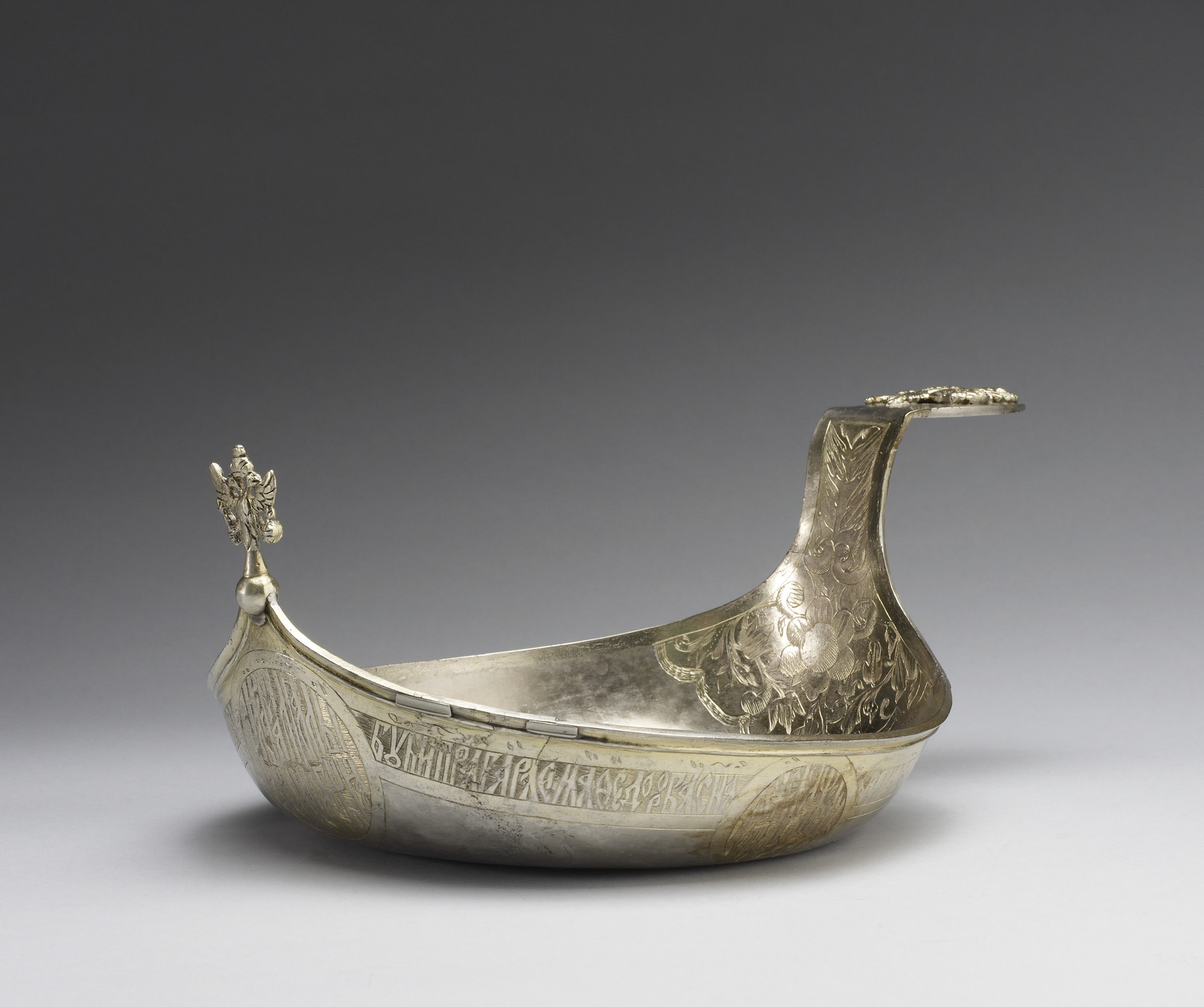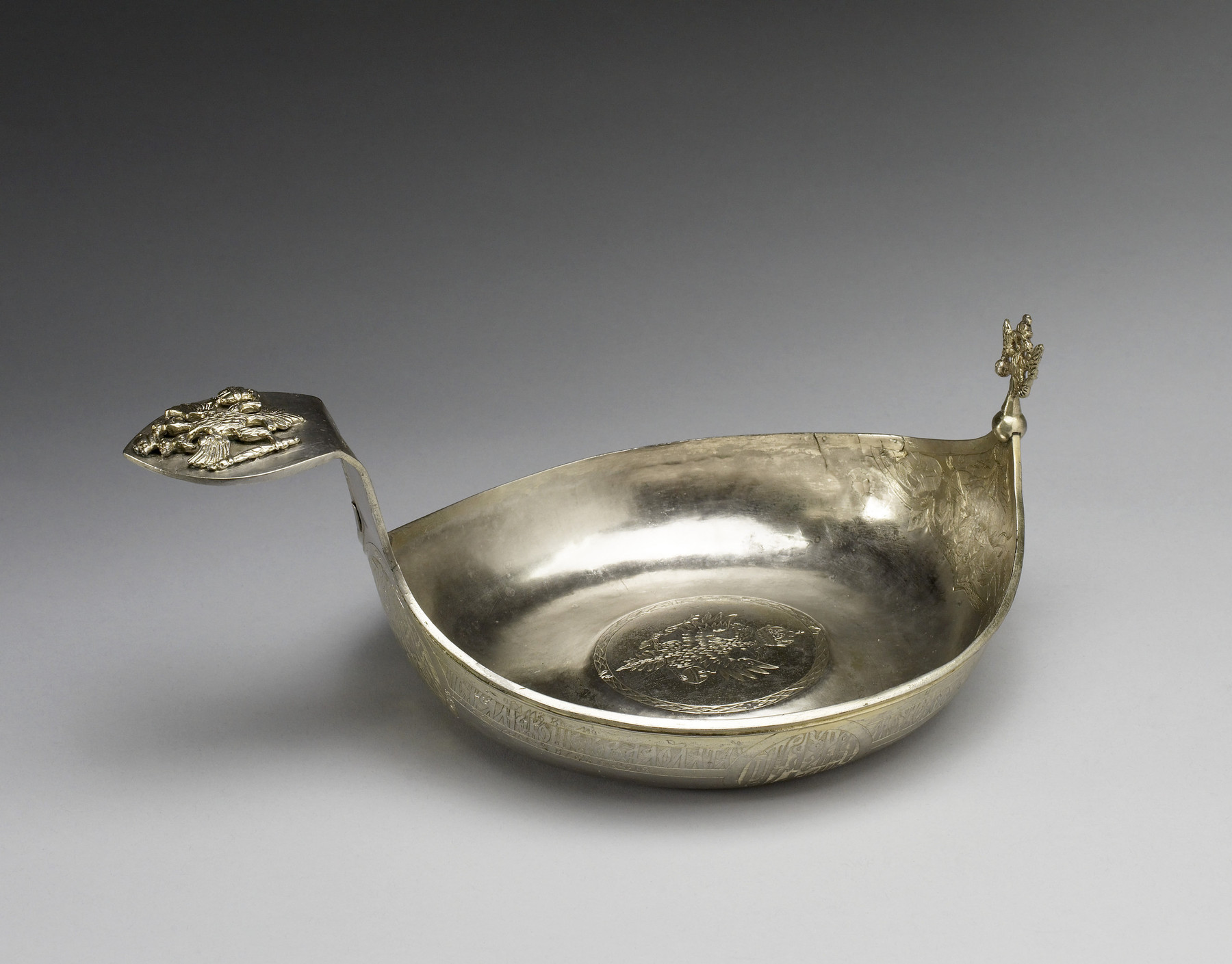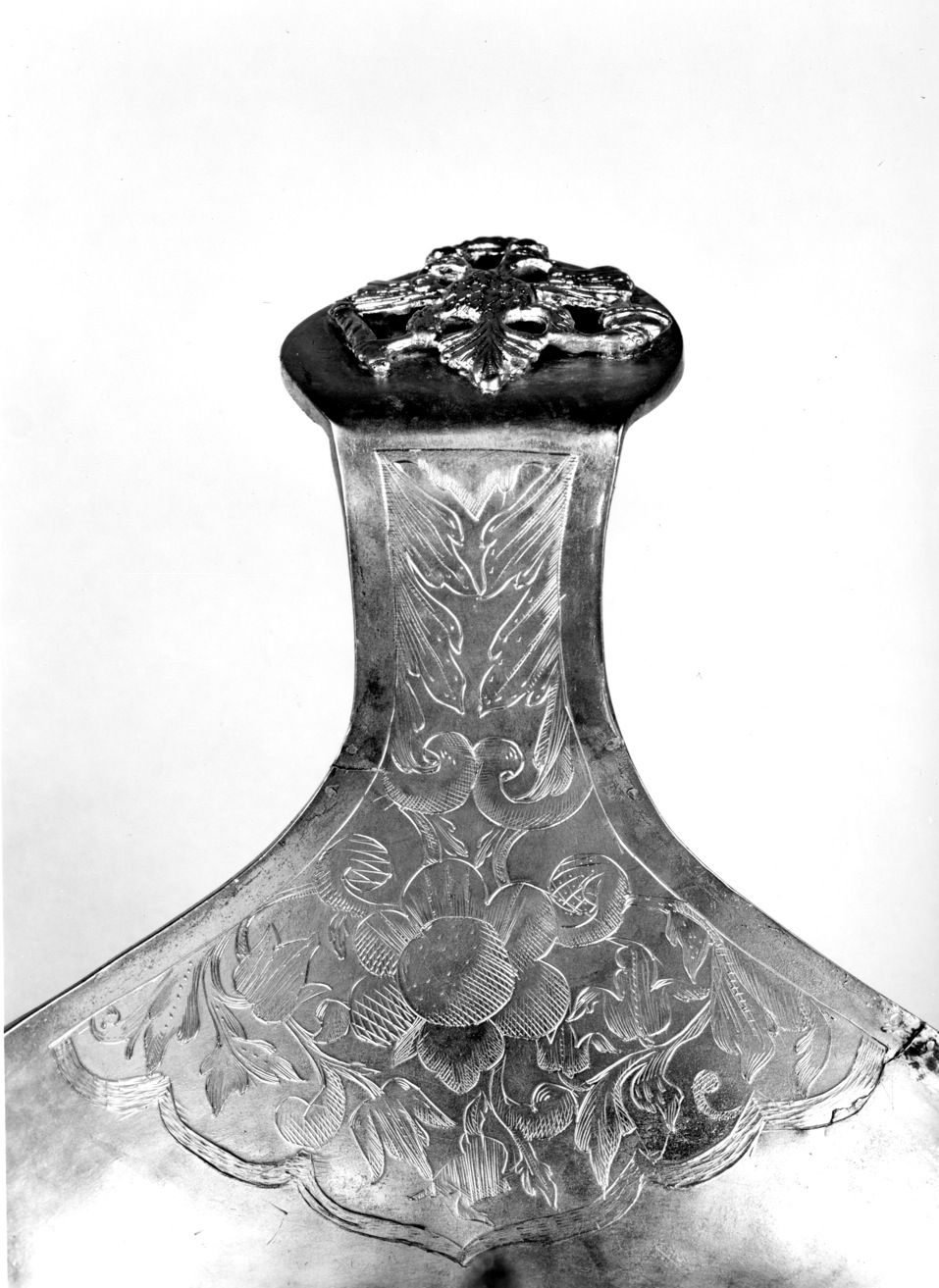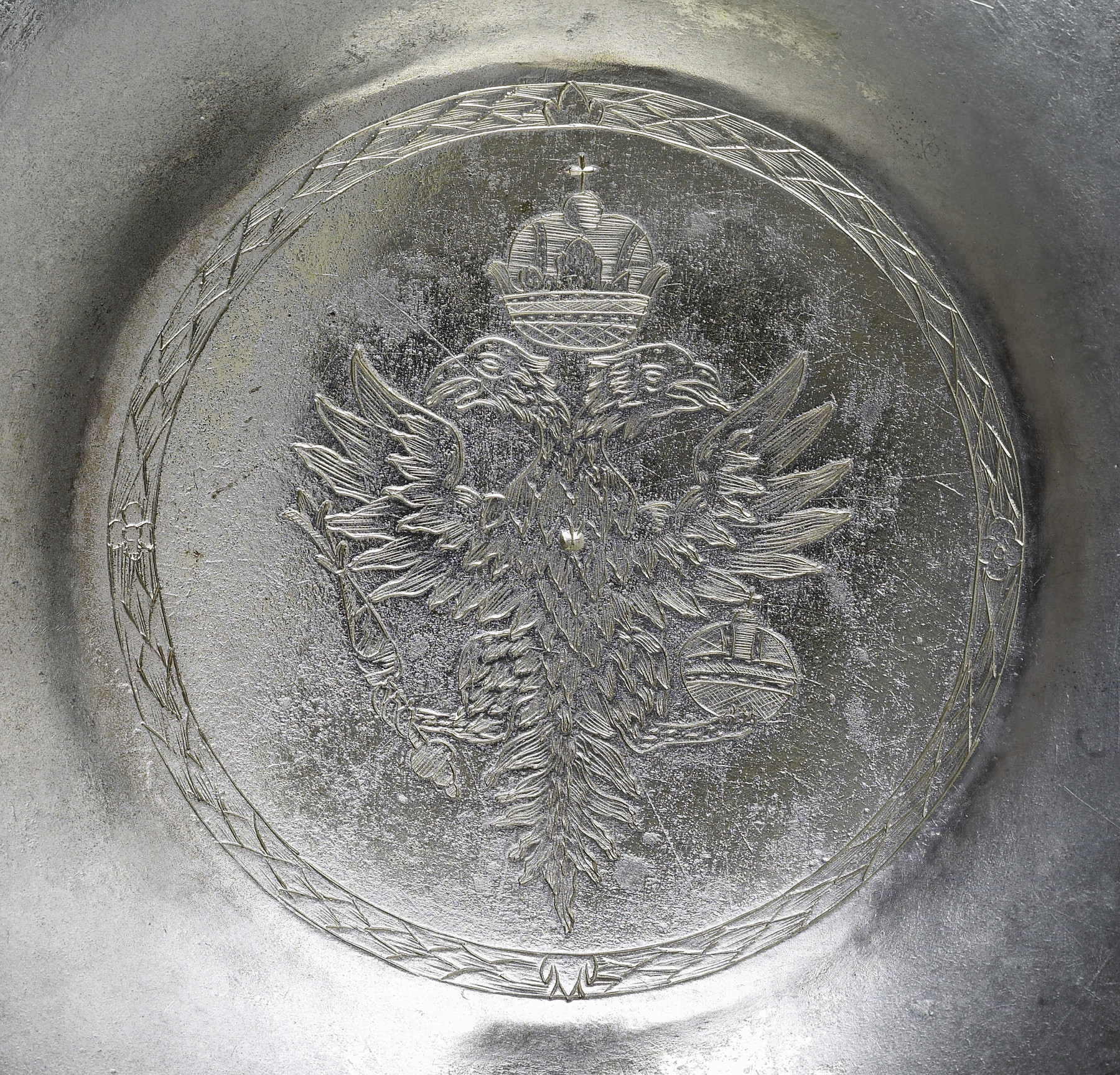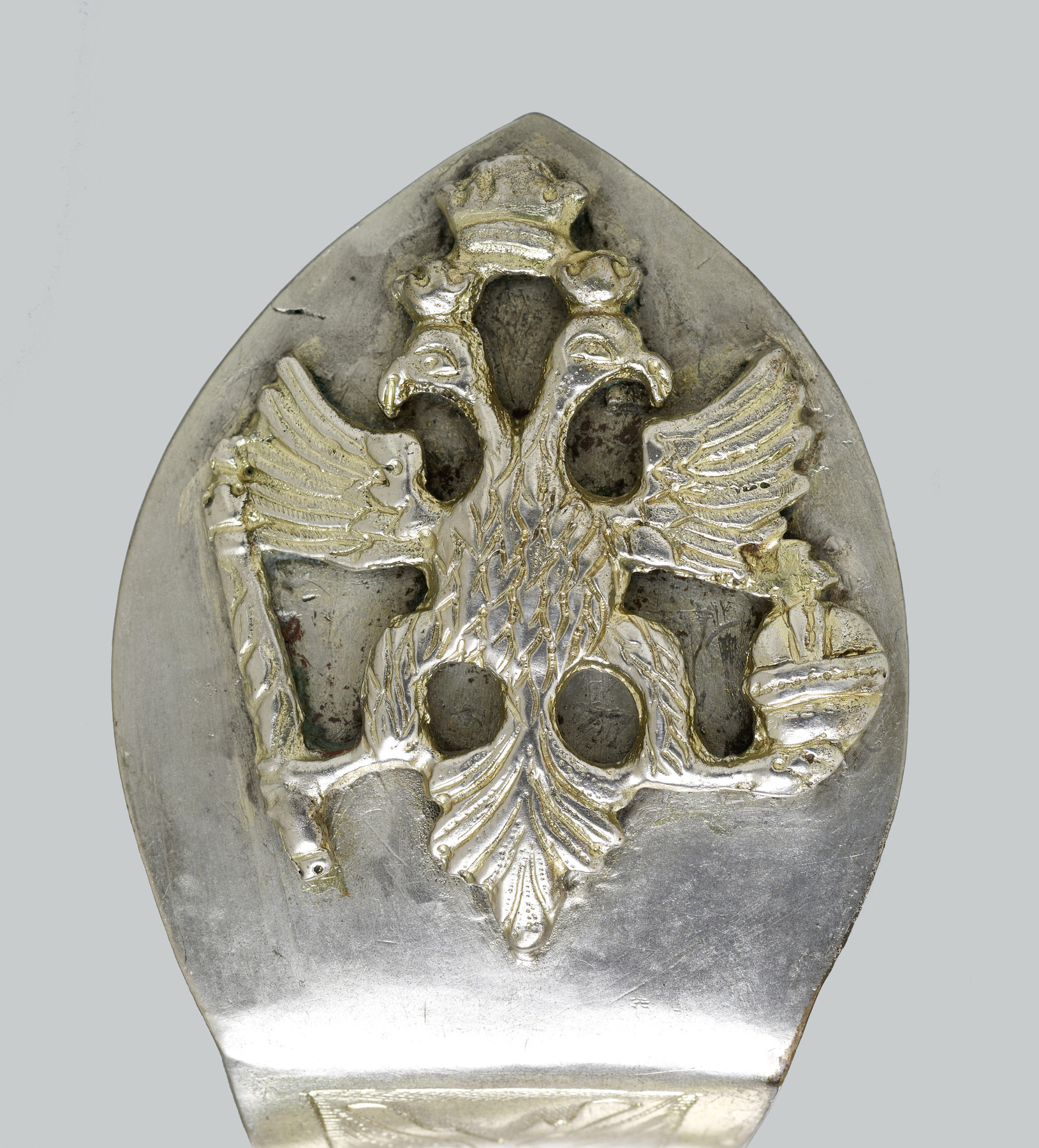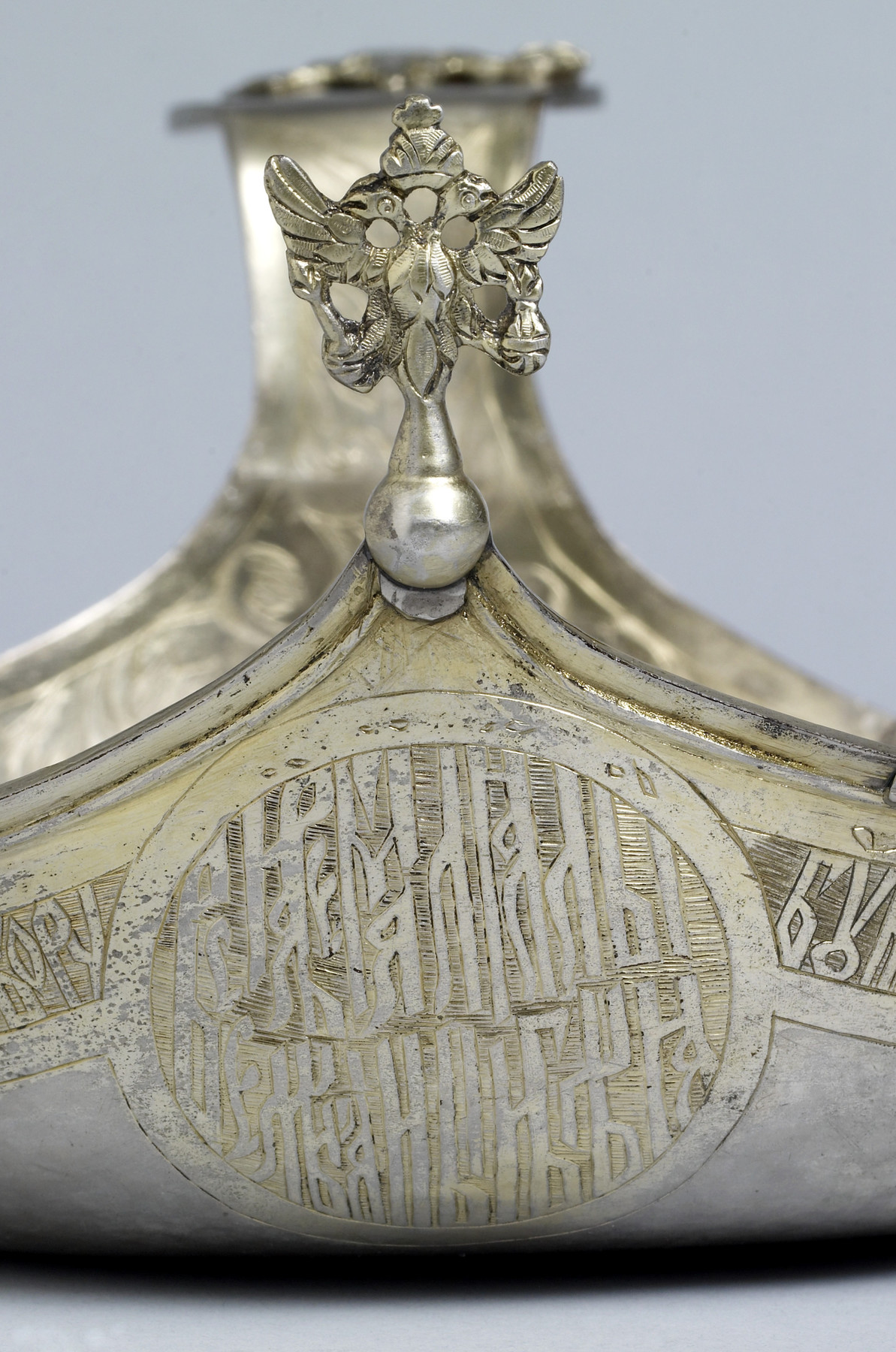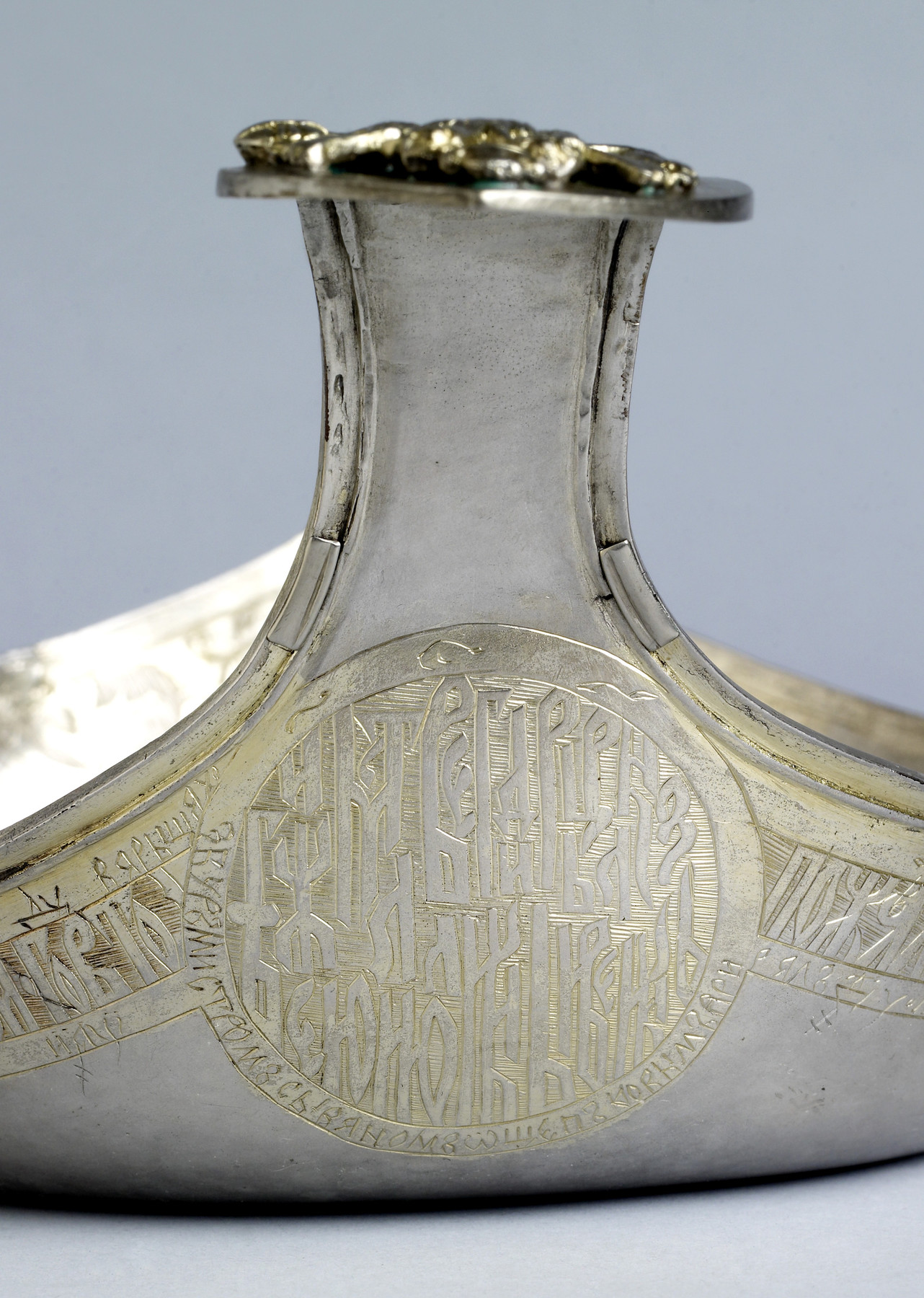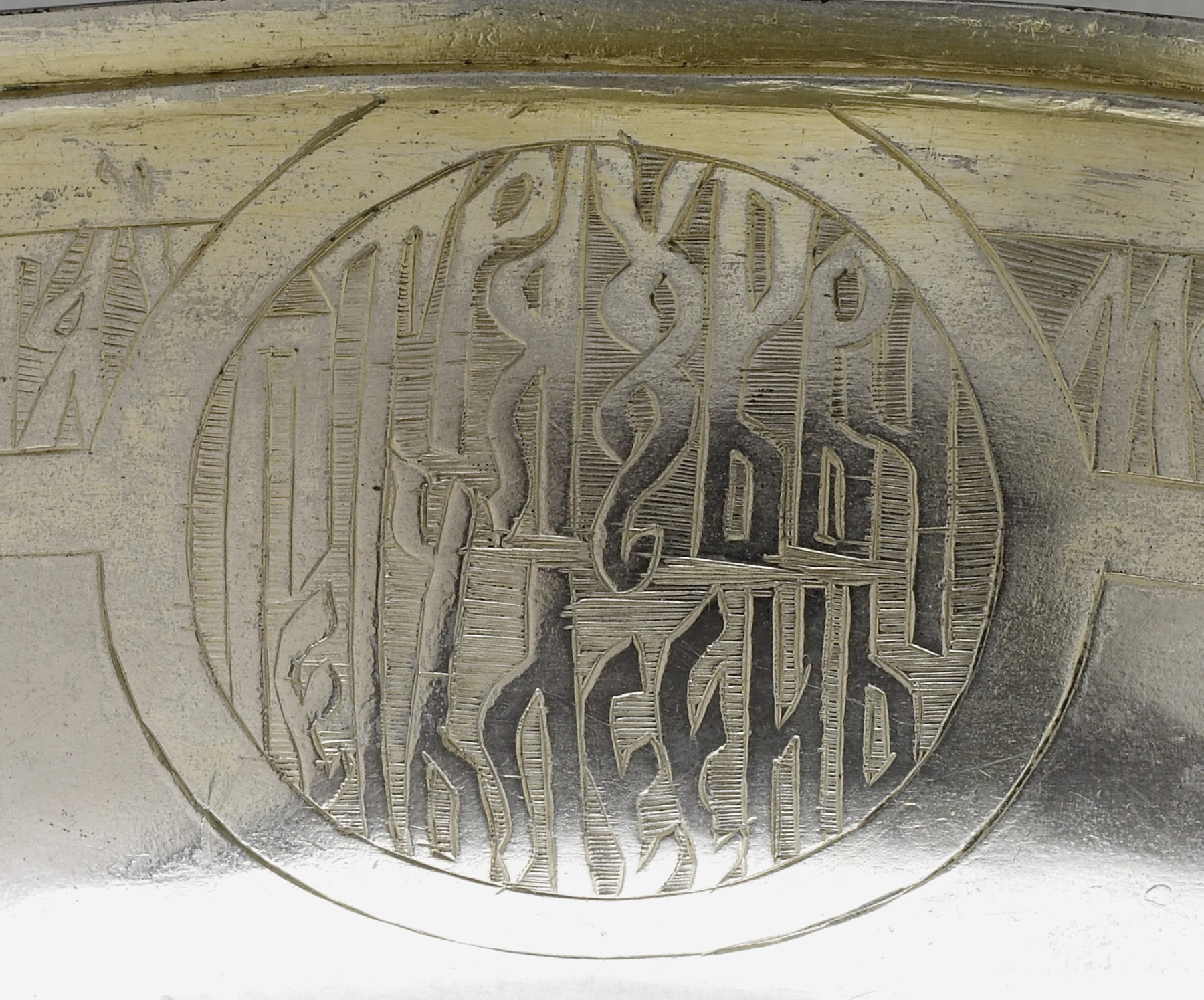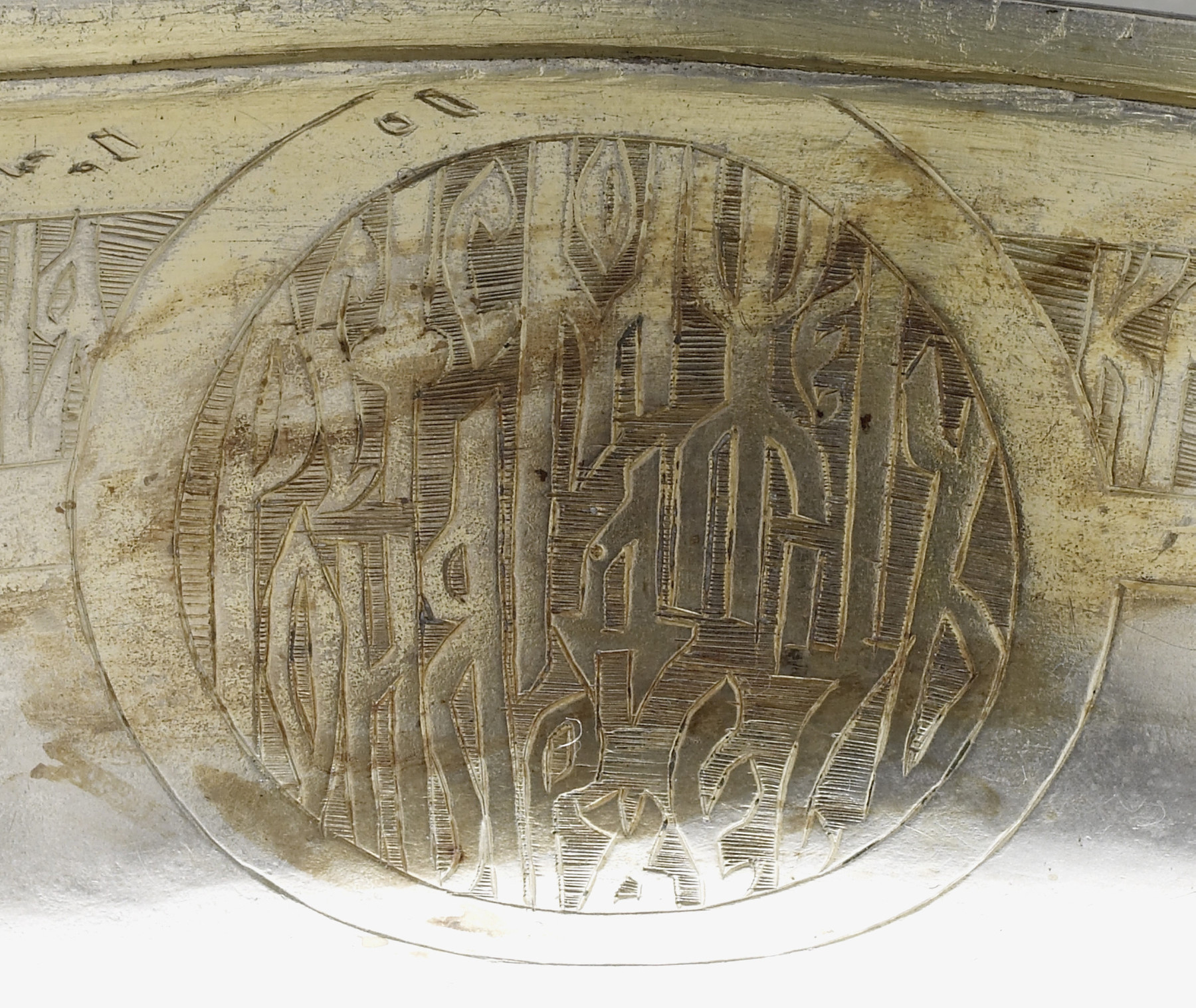Drinking Bowl (Kovsh)
(Baroque Europe )
A boat-shaped vessel used for ladling the "kwass" (strong beer) out of big bowls. In the center of the interior is an engraved double-headed eagle. Similar eagles are depicted in relief on the handle and on the finial. The kovsh was given toward the end of the 17th century to a bailiff of Orel by Peter the Great.
Inscription
Provenance
Provenance (from the French provenir, 'to come from/forth') is the chronology of the ownership, custody, or location of a historical object.
Alexandre Polovtsoff (Aleksandr Aleksandrovich Polovtsov), Paris, by purchase; Henry Walters, Baltimore, 1930, by purchase; Walters Art Museum, 1931, by bequest.
Exhibitions
| 2017-2018 | Fabergé and the Russian Crafts Tradition: An Empire's Legacy . The Walters Art Museum, Baltimore. |
| 1988-1989 | A Millennium of Christianity: Russian Art from The Walters Art Gallery. The Walters Art Gallery, Baltimore. |
| 1959-1960 | Russian Art: Icons and Decorative Arts from the Origin to the Twentieth Century. The Walters Art Gallery, Baltimore. |
Conservation
| Date | Description | Narrative |
|---|---|---|
| 8/24/2015 | Treatment | Cleaned |
| 8/24/2015 | Treatment | Cleaned to remove aged acrylic coating and silver tarnish in preparation for exhibition. |
| 8/24/2015 | Examination | Examined in preparation for exhibition. |
| 8/24/2015 | Examination | Examined |
Geographies
Russia (Place of Origin)
Measurements
H: 4 5/16 × W: 10 11/16 × D: 7 1/16 in. (10.9 × 27.1 × 17.9 cm)
Credit Line
Acquired by Henry Walters, 1930
Location in Museum
Not on view
Accession Number
In libraries, galleries, museums, and archives, an accession number is a unique identifier assigned to each object in the collection.
In libraries, galleries, museums, and archives, an accession number is a unique identifier assigned to each object in the collection.
57.797

